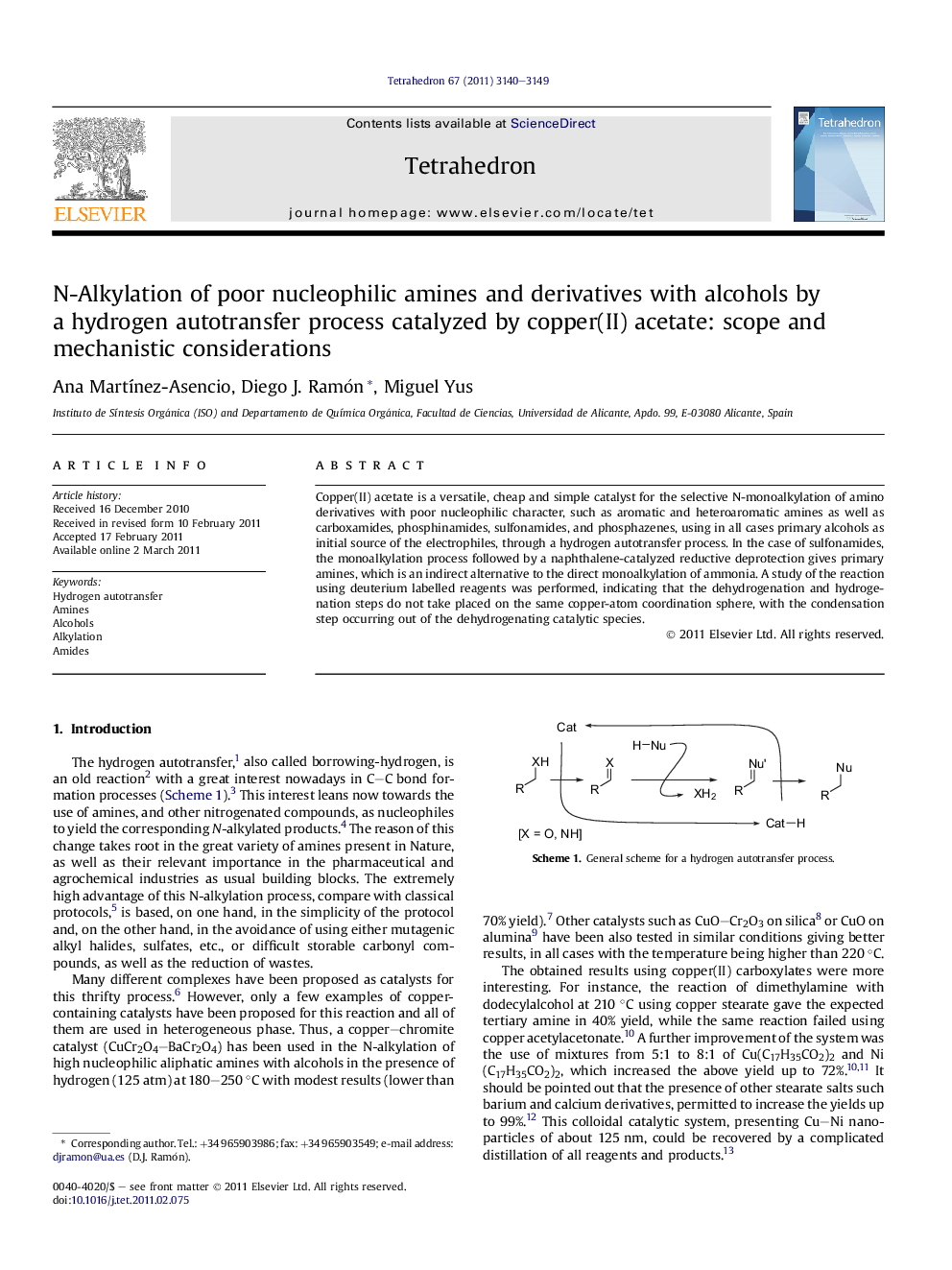| Article ID | Journal | Published Year | Pages | File Type |
|---|---|---|---|---|
| 5221131 | Tetrahedron | 2011 | 10 Pages |
Copper(II) acetate is a versatile, cheap and simple catalyst for the selective N-monoalkylation of amino derivatives with poor nucleophilic character, such as aromatic and heteroaromatic amines as well as carboxamides, phosphinamides, sulfonamides, and phosphazenes, using in all cases primary alcohols as initial source of the electrophiles, through a hydrogen autotransfer process. In the case of sulfonamides, the monoalkylation process followed by a naphthalene-catalyzed reductive deprotection gives primary amines, which is an indirect alternative to the direct monoalkylation of ammonia. A study of the reaction using deuterium labelled reagents was performed, indicating that the dehydrogenation and hydrogenation steps do not take placed on the same copper-atom coordination sphere, with the condensation step occurring out of the dehydrogenating catalytic species.
Graphical abstractDownload full-size image
